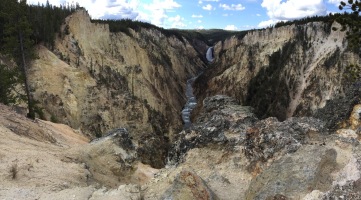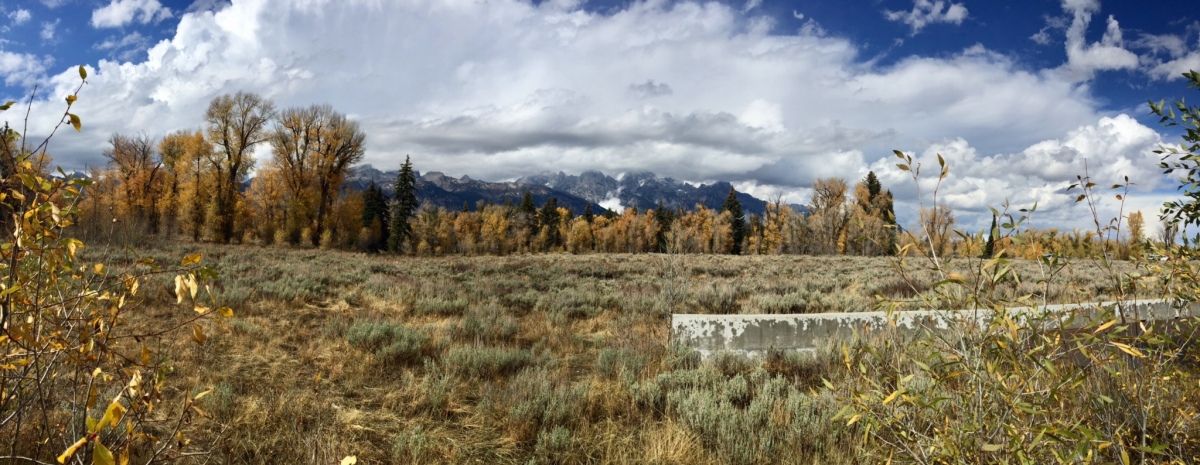In the first few chapters of John’s Revelation, Jesus addresses the seven churches: “To the angel of the church in Ephesus write….” “And to the angel of the church in Smyrna write….” As well, he asks John to write messages to the churches in Pergamum, Thyatira, Sardis, Philadelphia, and Laodicea. In addressing each of these churches individually, he addresses the entire Church – what we need to watch out for, what we must be rebuked about, and what we are doing well on.

Whenever followers of Jesus read these first few chapters, the question hopefully comes up of what Jesus would say to our church today. Would it be an encouraging word? Would it be a rebuke? Would it be a warning?
Since I live in the United States, I often ask, “What would Jesus say to write to the angel of the church in North America?” That’s certainly a loaded, but important, question. I’m sure Jesus would both rebuke and encourage. But I think he would also say that we’re a confused church and that we’re wandering all over the wilderness.
Here’s another way to ask the question: If Jesus was on the way to a meeting of the North American church, and while on the way he saw a fruit tree, would he curse it?
It’s what he did while on the way to the temple.
On the following day, when they came from Bethany, he was hungry. Seeing in the distance a fig tree in leaf, he went to see whether perhaps he would find anything on it. When he came to it, he found nothing but leaves, for it was not the season for figs. He said to it, “May no one ever eat fruit from you again.” And his disciples heard it. -Mark 11:12-14, NRSV
In the morning as they passed by, they saw the fig tree withered away to its roots. Then Peter remembered and said to him, “Rabbi, look! The fig tree that you cursed has withered.” -Mark 11:20-21, NRSV
Would Jesus actually curse your fig tree?
It seems like a harsh question. It’s a question that many people have a hard time even asking because the idea of Jesus cursing a harmless tree goes against the popular narrative of a culturally hippy Jesus who gives everyone nice feelings of rainbows, butterflies, skittles, sunshine, and unicorns growing in our tummies, and says yes to whatever so long as whatever makes our minds happy and our hearts flutter.
Mark and the other gospels actually tell us a different story of Jesus. Jesus is one who loves unconditionally, forgives, heals, and makes people whole, but also one who challenges authority, debates with a sharp mind, grows impatient and angry, and one who strikes terror into the hearts of disciples and townspeople with his demonstrations of power. The wealthy young man man who came to Jesus even went away grieving, the Pharisees wanted him dead, and the crowds were calling for him to be crucified.
Jesus convicts and asks for hearts to change, and that can be painful.
And, yes, Jesus is also one who curses a helpless fig tree.
When he comes back the next day, it’s withered away, down to the root, and on it’s way to death.

There’s a reason, though, that Jesus curses the tree. Jesus has been known to act out parables before, such as when he healed the blind man in two stages to show that the disciples had not been understanding clearly the first time around. He is doing the same here – bringing a parable and a lesson to life.
The first day in Jerusalem, Jesus entered on a colt, went to the temple, and left. The second day, Jesus passed by the fig tree, cursed it, and went to the temple where he caused mayhem, overthrew tables, and cursed the place. Then he left. The third day, Jesus passed by the fig tree and it was withered away. He went to the temple again where members of the Sanhedrin asked him his authority. He clearly demonstrated his authority when he cursed the fig tree and it withered.
The fig tree represents the temple, the temple system, and everything that went along with it. It’s reasonable to conclude that some of the main reasons for Jesus cursing it were corruption and religious leadership that were leading the people of Israel astray, as well as the possibility that temple ministry that did not allow for gentiles to worship in the way accorded by the law.
Additionally, by Mark’s account, these events occurred only a few days before Jesus’ arrest and crucifixion. More importantly, with his death and resurrection, the temple system would be obsolete and no longer the place of God. Mark 13 even records this account between Jesus and a disciple:
As he came out of the temple, one of his disciples said to him, “Look, Teacher, what large stones and what large buildings!” Then Jesus asked him, “Do you see these great buildings? Not one stone will be left here upon another; all will be thrown down.” -Mark 13:1-2, NRSV
If the fig tree represents the Jewish religious system of Jesus’ day, what would Jesus say to the fig tree of our modern Christian religious system?
This fig tree grew in the spring. The tree would have been leafy and, if it had any fruit, it wouldn’t have been edible at that time. It would not have grown good fruit until late summer. From a distance, the tree appeared healthy; but when Jesus got to it, the tree either had inedible fruit or no fruit at all.
What kind of fruit is your church growing? What kind of fruit is the church in North America growing?
Have we ended up with inedible crops of self-righteousness that say, “Look at me! Look at us!” Or do our trees produce edible crops of true righteousness from Jesus Christ and the Spirit that point back to God?
Are we more concerned about maintaining systems and fruit that look delicious on the outside, but meanwhile a worm has eaten out the inside, and when we take a bite, the fruit is actually rotten?
Have we become a church that is run either by Pharisees or Sadducees, both pointing fingers at the other, while we miss the point of what it means to be truly like Christ?
Are we a church that is singularly focused on Jesus, allowing him and his Spirit to lead and breathe life into us? Or are we too wrapped up in ourselves and our interpretations of whatever the hot topic is to realize that we are lost, wandering in about 30 different directions all over the forest, and arguing about how to hold the compass?

What is your fig tree like? Would Jesus curse it? Or would Jesus bless it?
I know we all want to Jesus to bless our tree. It’s our gut reaction to say that, of course, Jesus would bless it. And I’m sure there are some that would do all sorts of theological dancing to justify Jesus blessing our various trees, no matter that kind of inedible fruit was growing on them. Obviously no one wants Jesus to curse the tree.
But he did. And he didn’t even ask it to get better. He cursed it. And it withered away, all the way down to its roots.
These are words that need to be reflected on through prayer and time with Jesus and his Spirit. Jesus’ actions here are challenging and convicting, especially for our modern church. It’s a passage in scripture that should be taken seriously by any local church. But especially for the church in North America, this enacted parable can be a hard one to swallow.
The edible, enriching fruit of Jesus Christ is out there. Go after it. In some places, Jesus would bless the fig tree. Unfortunately, though, there are other places where Jesus would walk by the fig tree and say, “May no one ever eat fruit from you again.”
“For to those who have, more will be given; and from those who have nothing, even what they have will be taken away.” -Mark 4:25, NRSV
For more exegesis on the fig tree in Mark 11, see “Clearing Up Confusion In Cursing.”

